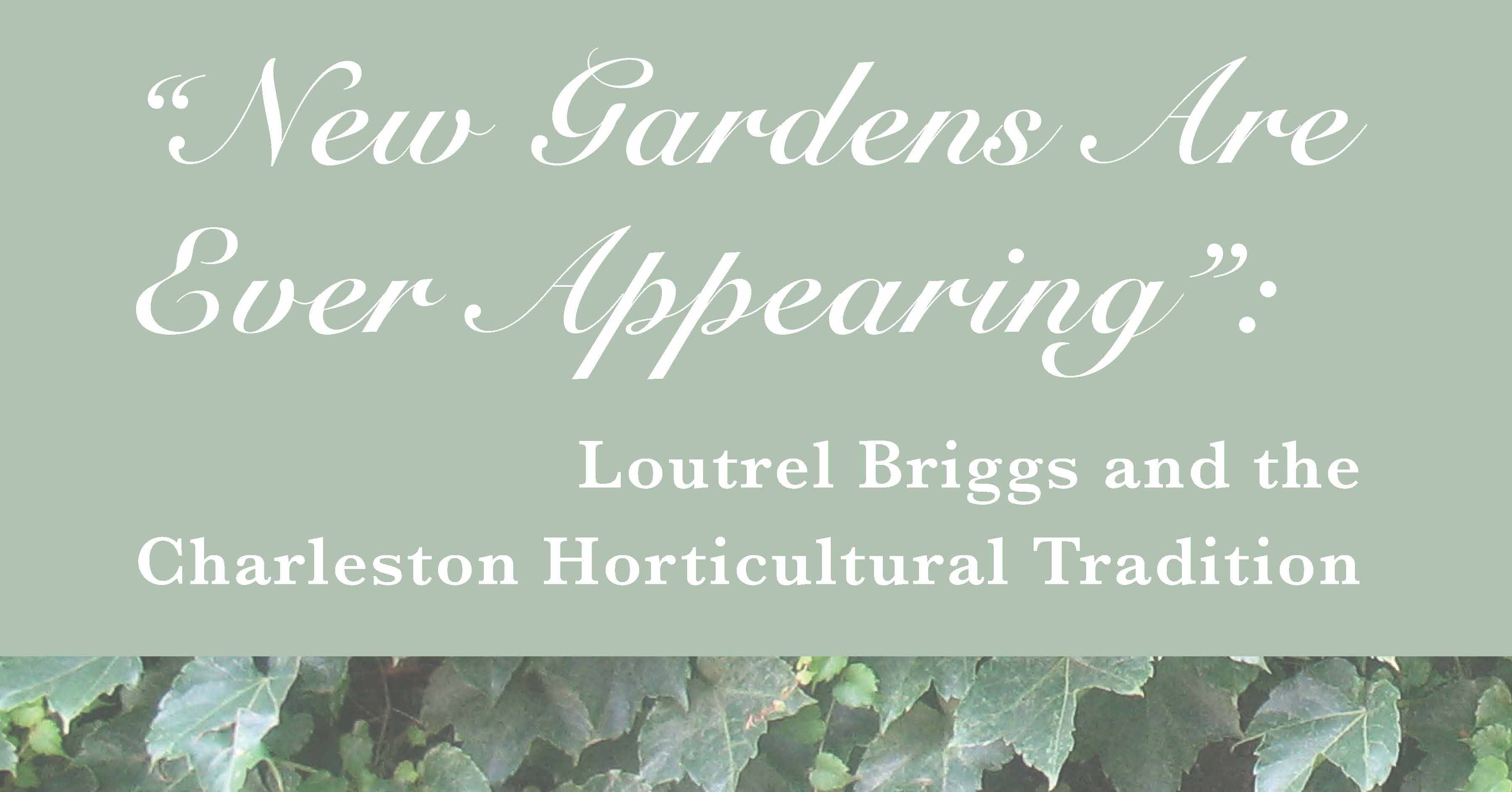Charleston is known for its beautiful public and private gardens. Spaces filled with manicured green shrubbery and fragrant blossoms are abundant. Residents of early Charleston such as Martha Logan, André Michaux, Robert Squibb, and John Drayton laid the foundations for planned outdoor spaces. But it was New York-born landscape architect Loutrel Winslow Briggs (1893 – 1977) who left the most voluminous and influential footprint on the cultivated landscape of Charleston and its environs.
Scholarship and commentary on Briggs’ work has traditionally emphasized his contributions to the design of Charleston’s small town gardens, most of which were commissioned by private citizens of means. However, the magnificent corpus of Briggs’ architectural plans preserved in local archives demonstrates the broad range of Briggs’ vision that goes well beyond the private gardens enjoyed by Charleston’s elite. Over his career that spanned six decades, Briggs was commissioned to beautify and plan grounds for public memorial sites, churches, a labor union headquarters, public housing projects, schools and even a service station.
Loutrel Briggs believed in the “wealth of pictorial possibility” held by the landscape of Charleston and vicinity. The gardens he designed are trademarked by their attention to and appropriateness for the climate, architecture, and the historic fabric of the region. Briggs relied on a restricted palette of less than thirty traditional Charleston plants including the camellia, azalea, loquat, tea olive, wisteria, yellow jessamine, oleander, and star jasmine. This finite plant palette not only helped to unify the landscape design, but also provided a link with the past.
Archival objects from a variety of Charleston’s cultural heritage repositories are included in this exhibit and tell the story of how Briggs’ prolific and wide-ranging work unfolded and evolved. Plats, engravings, sketches, and tools represent the foundations upon which Briggs measured his considerable influence. Briggs’ own intricate pencil drawings demonstrate the range of projects to which he contributed. Scrapbooks and other ephemera created by the influential garden clubs of Charleston reveal the important role played by members of the gardening community in bolstering Briggs’ efforts to maintain the integrity and allure of Charleston’s outdoor heritage.
To help support the acquisition of additional materials documenting Briggs’ work, please contact us!
You can also view a brief guide to the physical installation.

